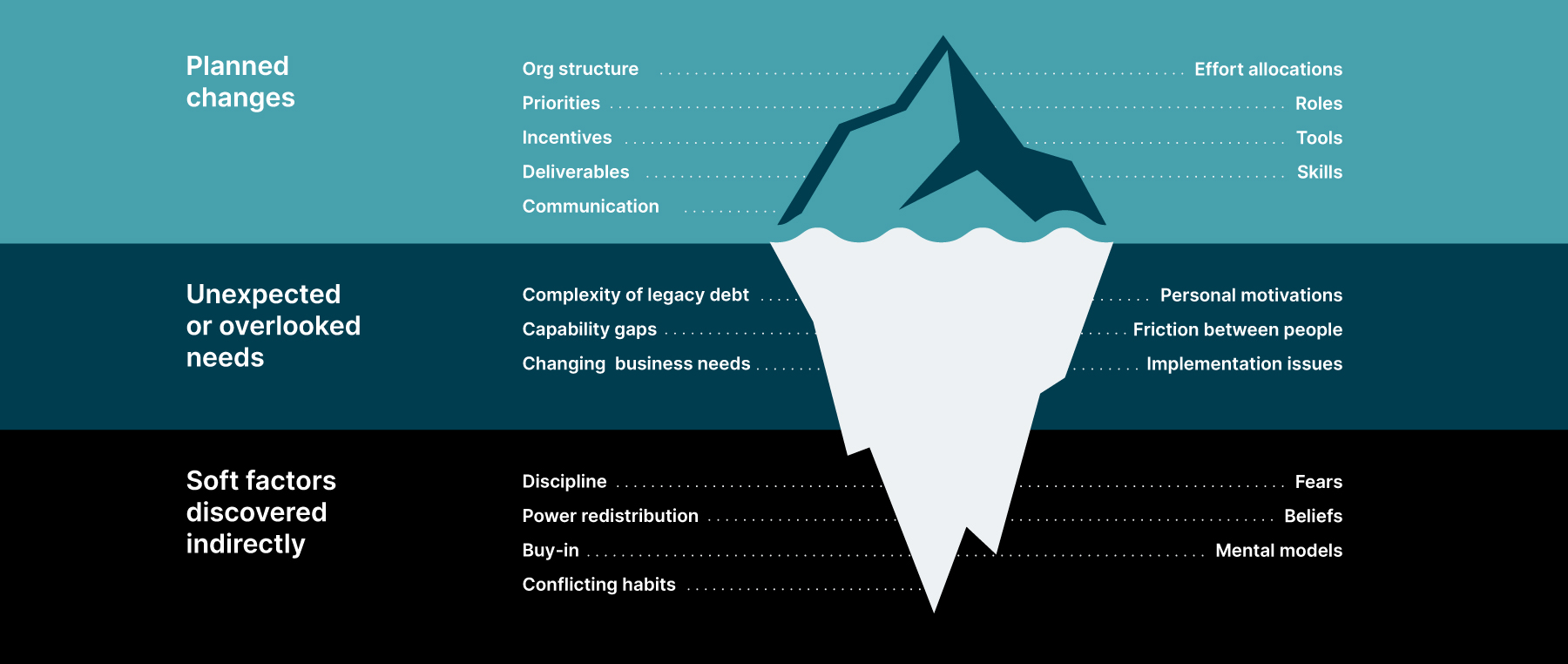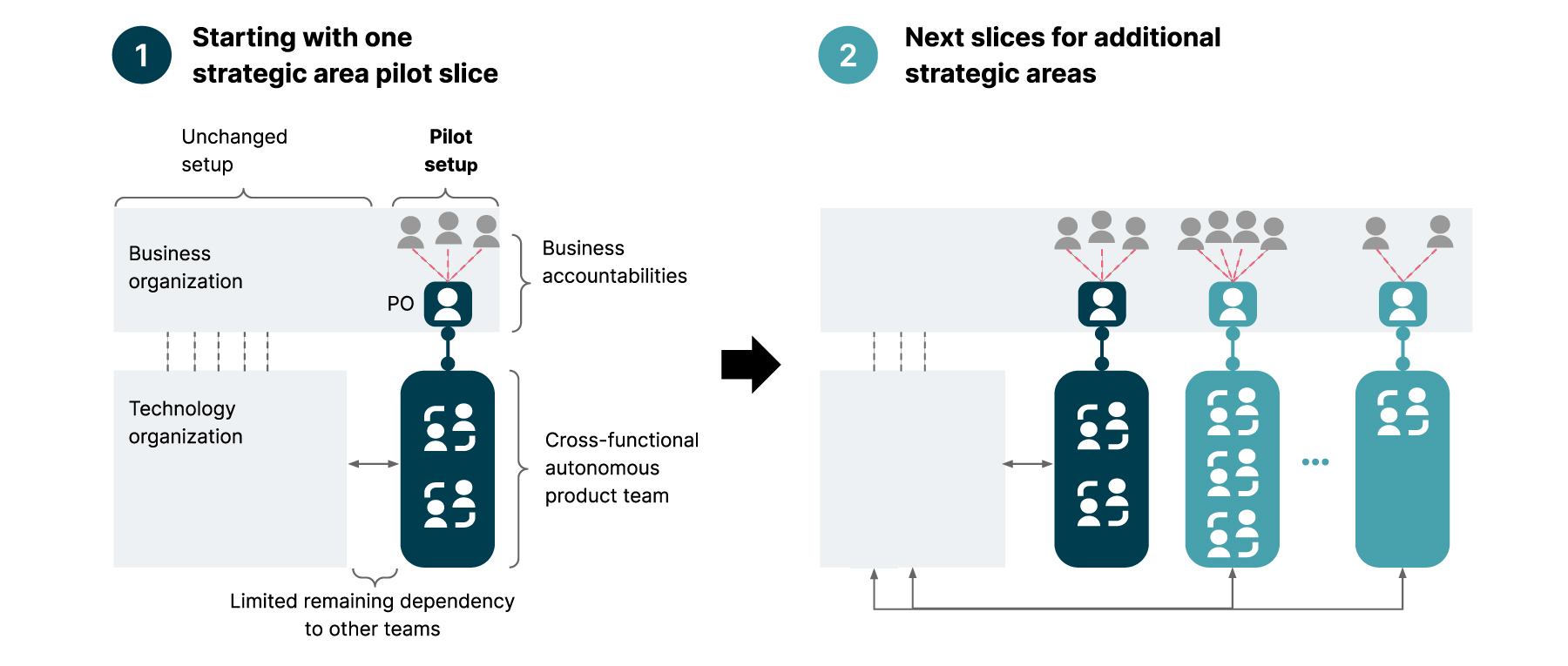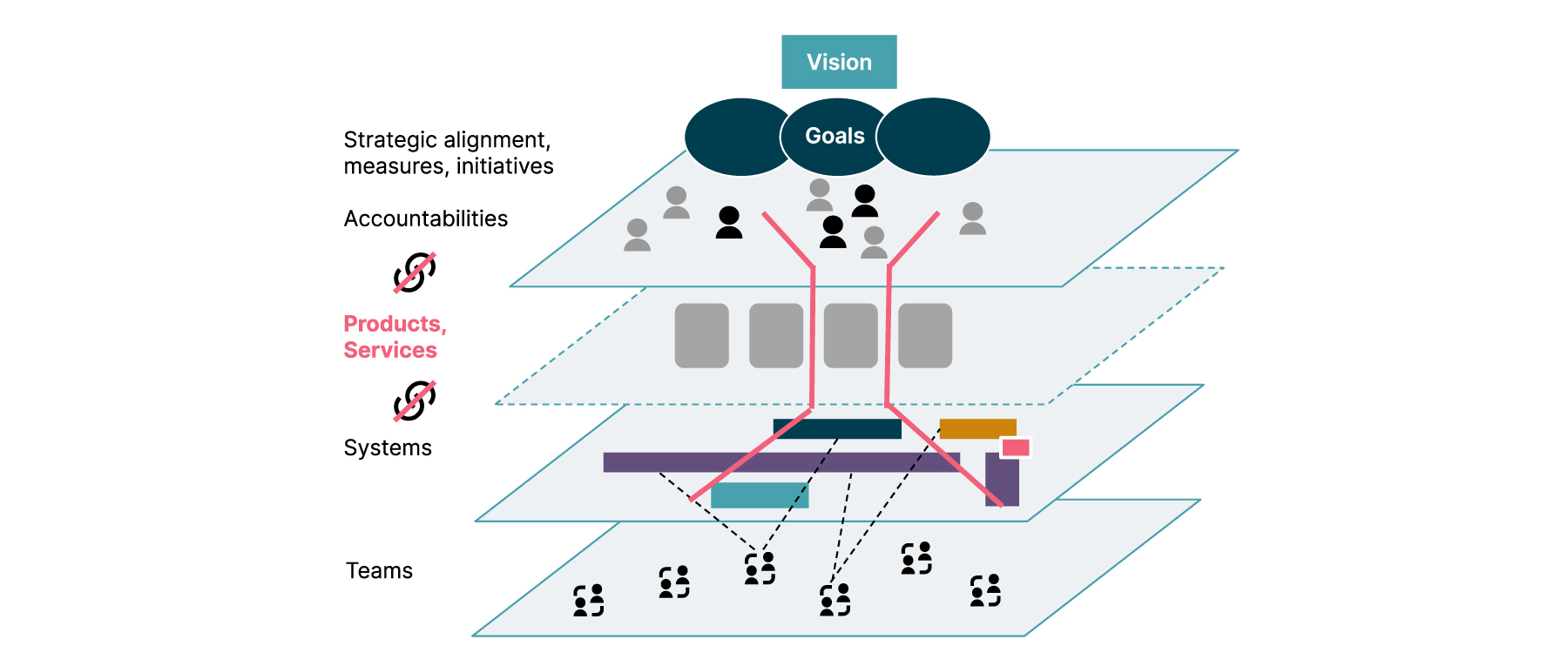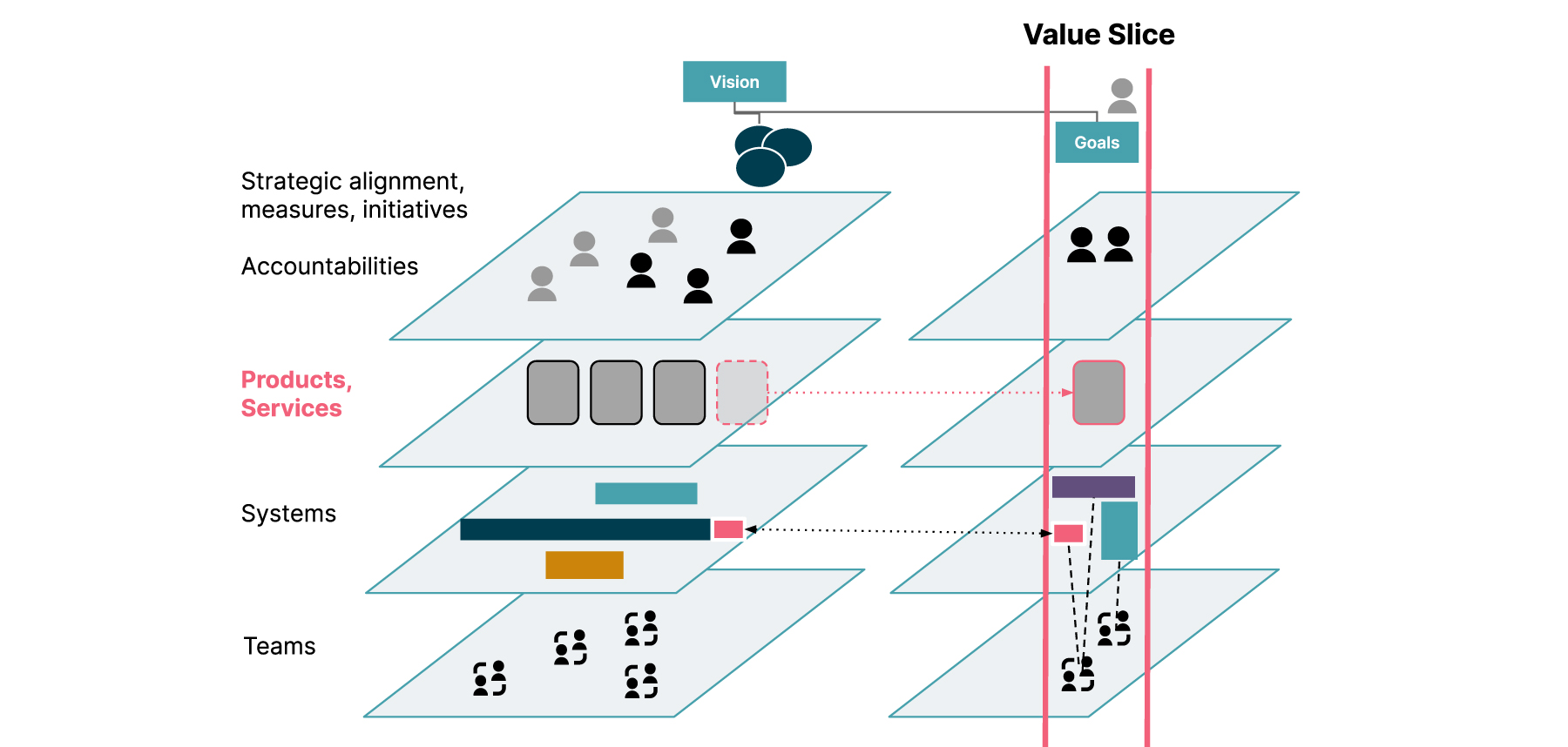Are your competitors leaving you in the dust when it comes to digital innovation? Are you running a digital transformation program that’s failing to deliver concrete impact? You’re not alone. According to recent studies (see the likes of McKinsey, BCG, as well as us here at Thoughtworks) only around 30% of organizations realize successes such as expected revenue increases and expected cost reduction.
In today's ever-changing commercial landscape, organizations face a constant struggle: how to design and focus their digital transformation efforts to maximize value for both customers and business lines. Choosing the right transformation strategy, which manages the balancing act between market impact and organization friction is daunting. But what if there was a smarter approach — one that would make your transformation count? What if there’s a way to remain internally aligned while also focusing on impact? Here is where Value slices come in, offering a set of principles and guardrails that can break the transformation journey down into actionable, high-impact pieces.
The aim, ultimately, is to help teams develop software with autonomy and improved flow so they can deliver well-scoped, strategic products. To do that we need to apply parts of Conway's Law, lean enterprise, value-driven portfolio management, and product thinking to design an organization change approach which is simple enough and effective - each "Value slice" being a team (around 30-40 people) focusing on such a product area for a longer period of time (2+ years roadmap) - until another product comes into strategic focus.


Source: David Viney, the J curve effect observed in change and Elisabeth Kübler- Ross, the Change Curve
“Slice-sized” transformation
We need to forget about massive "big bang" approaches to digital transformation. Our work with TBC Bank, for instance, has proven that incremental, slice-sized approaches move organizations to a desired future state more effectively.
This is for a couple of reasons. First, it gives you room to accommodate rapidly changing markets. Second, it’s only once you start the transformation that your organization's change needs will be uncovered, due to the complex nature of human dynamics, capabilities and beliefs.
In other words, a “slice-sized” transformation strategy delivers value faster while uncovering change needs beyond those that are most obvious or visible. Each slice allows you to surface hidden challenges, frictions and gaps that arise from overlooked and soft transformation factors. This gives you a better chance to identify them and decide how to tackle them effectively without letting them overwhelm you.
I like to use the metaphor of an iceberg to explain how some change factors are obvious and clear, while many others — which are often just as important — lie beneath the waterline, hidden from view.


In more concrete terms, it’s advisable to cut the undertaking into smaller, digestible pieces and concentrate on only a few of those slices at a time.
But how do you do this? There are three things needed: align on the priorities for transformation, set up and empower teams with the necessary autonomy to work across a given slice and adopt customer-centric thinking to ensure transformation efforts are delivering value to end users and the business according to measurable and predefined goals.
Putting the approach into practice
One way of getting started with a slice is for a transformation office to assess impact (customer needs and market trends, for example) and feasibility (capabilities and systems for instance) to identify a few areas where transformation could yield particularly significant results — imagine, for example, a part of the business where you believe you could drive a 20% increase in active users or a 15% reduction in costs within six to nine months. Once that has been done, the areas you’ve selected are set up as autonomous teams with the capabilities needed to reach the goals including existing systems and people.


Eventually, enough momentum should be generated for the transformation to be expanded across other strategic products within the organization. This is because, if done well, the rest of the organization will recognize the positive effect of the transformation in terms of things like prioritization, planning dependency management, and communications.
This is another common cause of failing transformation approaches in that they presume only organization-wide changes yield positive effects while the opposite is true. Well-scoped, intentional changes create positive ripple effects within the organization — ultimately leading to the aspired return on investment.
Why “value” slices?
What makes a slice a “value” slice then? A good transformation slice allows for end-to-end digital product development and delivery. End-to-end means that a team is set up — with all the required capabilities — to own and deliver on a product or service customer journey autonomously.
If your approach to transformation isn’t optimized for autonomy and reducing communication overheads, the consequences will be a continuing disconnect between strategic expectations and the reality on the ground of software development teams. This won’t be fixed by building a new process — the broken structure inhibits effective change because people will always try to optimize for their own goals and ease of communication. A typical effect of this is described by Conway’s Law; value slices are a useful technique for what’s called an Inverse-Conway-Maneuver.


So, what does a value slice look like in reality? One of our clients made a value slice bet: The board decided to focus on improving the sales of product bundles. Previous developments took whole quarters due to siloed teams. By implementing a value slice — ramping up a team with all necessary product and technology capabilities aboard — they overachieved their sales goal by 20% after eight months. Additionally, the speed of development improved as a result of removing dependencies to the rest of the organization. On top of increased autonomy, focused product ownership fueled feature experimentation, which has been another major driver of the impressive results.


The more that discrete product areas are set-up as autonomous teams, the more the people in those teams can focus on the full customer experience instead of optimizing locally in their capability or system layer. The resulting organization structure resembles stacks of succulent, end-to-end value slices. Although it’s worth noting that the entire organization may not need this model, for strategic product areas focusing on time to market there will be a significant benefit thanks to the increased agility and focus.


To summarize, here are four sensible defaults we follow when working with clients on their transformation journey using value slices:
Assess and set the right expectations within senior leadership to negotiate the slice-sized approach and the right appetite for change.
Scope and select a pilot product (and two to three first-wave) transformation areas which are well-suited to deliver clear business value. Leave the rest for later.
Define the slice structure and set these areas up with as few compromises as possible in regards to product development autonomy. Build on successes and learnings in future transformation area waves.
Focus on getting value out of the transformation of product areas, before moving the transformation support structure further along. Resulting success stories can act as motivating exemplars, even if future waves of prioritized product areas struggle in the early stages of their transformation journeys.
How to get going with value slices
A crucial prerequisite for getting going with value slices is clarity on the whole product landscape. Only if this common language for products exists, value-slice-style transformation can start and does not bog down in an infinite analysis and decision-making loop. Furthermore, you need to introduce a set of activities to get hands-on with value slices in your company, amongst others how to identify slices and setting them up with correctly scoped and structured teams around them.
Disclaimer: The statements and opinions expressed in this article are those of the author(s) and do not necessarily reflect the positions of Thoughtworks.


















